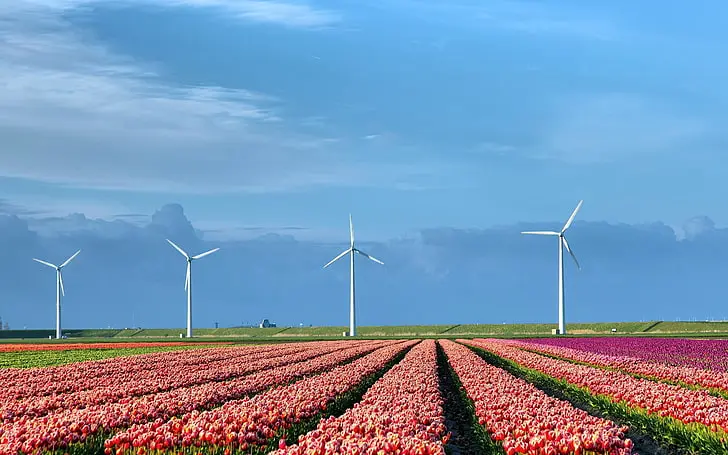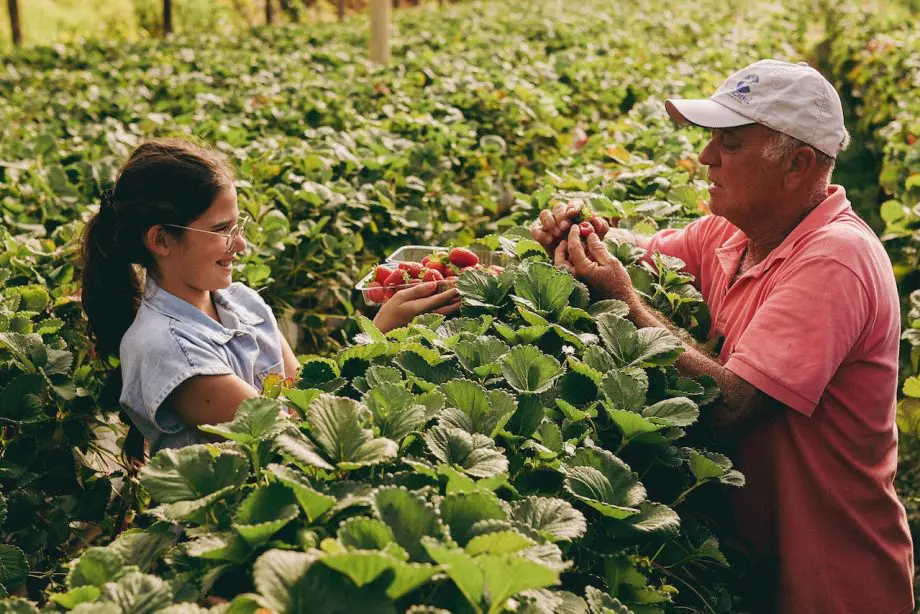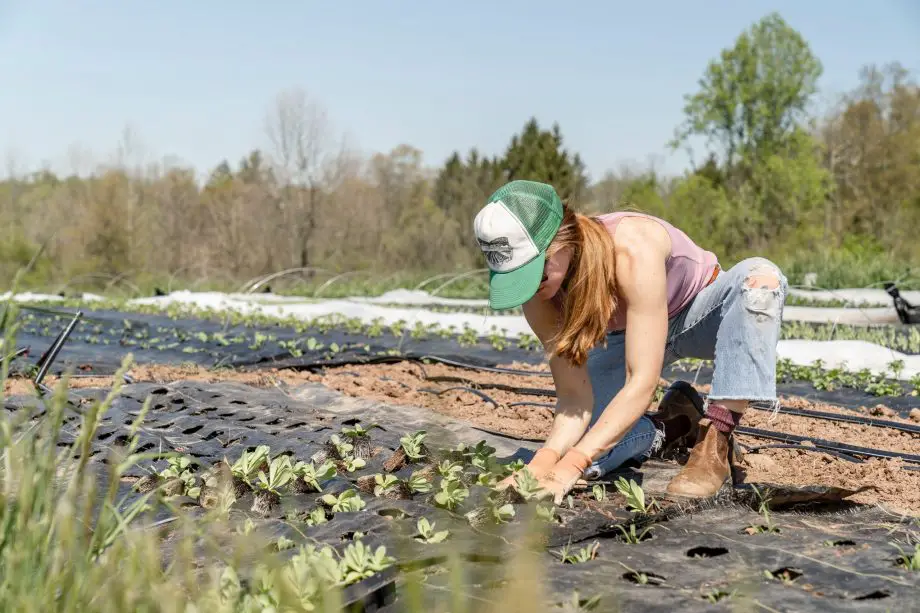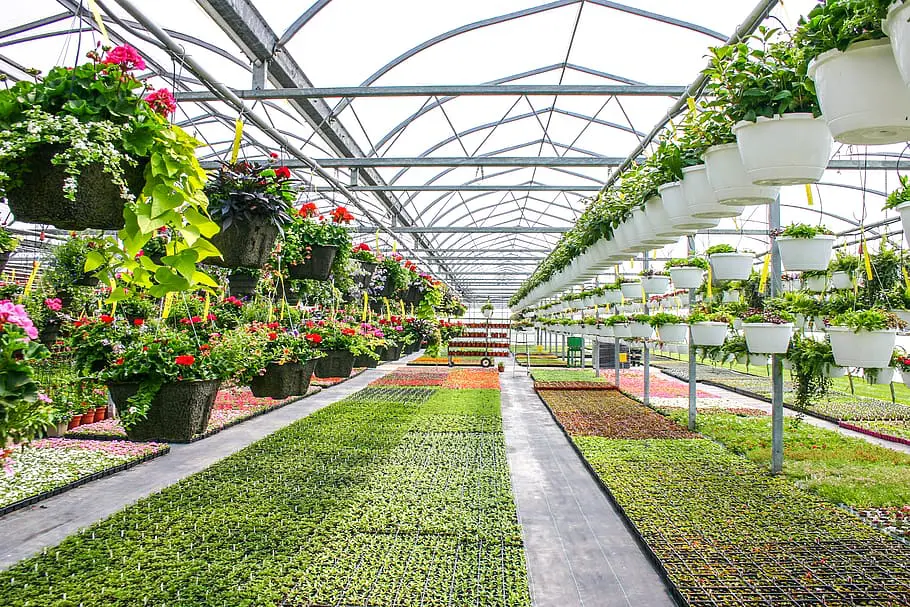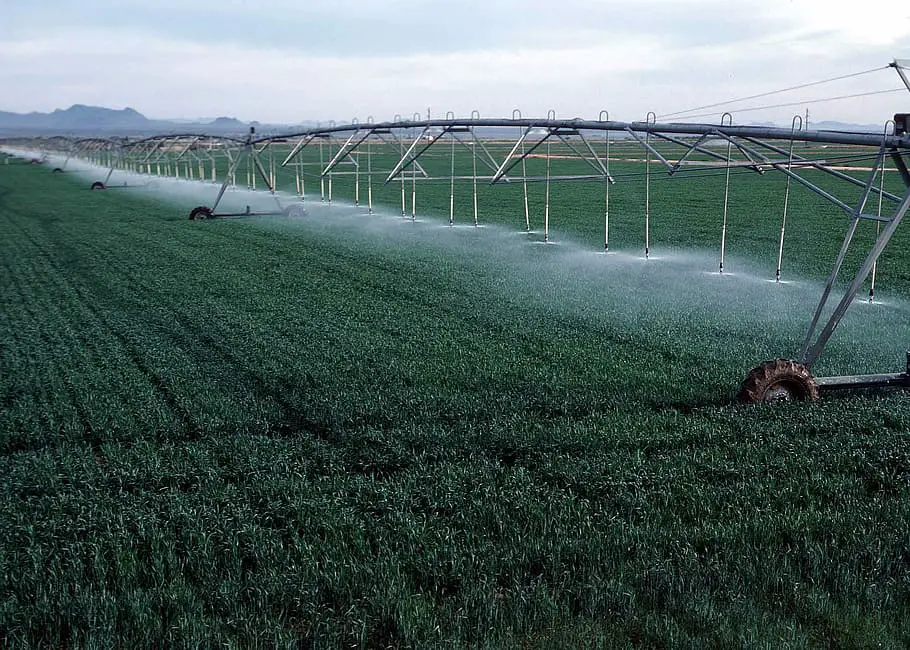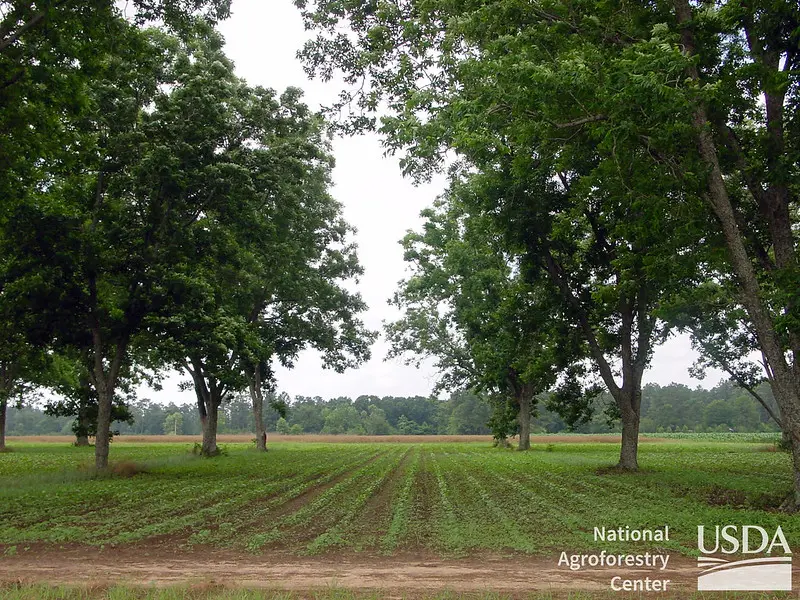
Navigating the world of agroforestry and climate change? Dive into our guide, where the planet’s health meets smart farming. Discover a greener future!
Ever found yourself sipping coffee while pondering over ways to make our planet a tad bit cooler (literally)?
Well, there’s a match made in green heaven that’s been catching waves lately, agroforestry and climate change.
It’s where the charm of old-school farming dances with modern ecological needs.
Curious? Let’s deep dive into this harmonious blend and discover its wonders together.
Agroforestry and Climate Change
Agroforestry and climate change are intricately linked. Agroforestry integrates trees into agricultural landscapes, enhancing biodiversity and soil health. This practice sequesters carbon, mitigating the effects of climate change. Moreover, it provides resilience against extreme weather events, promoting sustainable and adaptive farming.
Have you ever found yourself wondering how trees, crops, and climate could possibly be linked?
Well, they share quite the story! In this piece, we’re diving into the captivating world of agroforestry and its promising dance with climate change.
We’ll unfold the history, the different models, and how this practice could be our ticket to a balanced ecosystem. Buckle up for a green journey!
Definition of Agroforestry
You know when you’re making a smoothie and you mix fruits with some greens? Agroforestry is somewhat like that but for our land.
It’s where we mix traditional crops (think corn, wheat, and the like) with trees and shrubs.
It’s not just about variety; it’s about creating a harmonious ecosystem where each part supports the other.
So, in simpler terms, it’s like farming, but with a dash of forest sprinkled in!
Brief overview of climate change and its implications
Okay, let’s take a tiny step back to our science class days, shall we?
Our planet is getting warmer, and while some might fantasize about endless summers, it’s not as fun as it sounds.
Rising temperatures, melting ice caps, and unpredictable weather patterns are just a few of the changes we’re seeing.
This isn’t just about needing more sunscreen. It affects our food, our homes, and the natural world around us.
It’s like Mother Nature’s way of telling us she’s got a fever, and we need to do something about it.
Importance of sustainable agricultural practices in the context of climate change
Now, farming is pretty old-school, right? But the way we’ve been doing it needs a 21st-century upgrade.
Think of it like updating the software on your phone. Sustainable agricultural practices, like agroforestry, are that necessary update.
They help our land heal and become more resilient. When we talk about the climate changing, these practices can act as buffers, reducing the harmful effects.
Plus, they give back to the planet by storing carbon, controlling erosion, and creating healthier soils.
It’s all about working with nature, not against it. Imagine tending a garden where everything’s in sync – that’s the dream we’re chasing!
Understanding Agroforestry
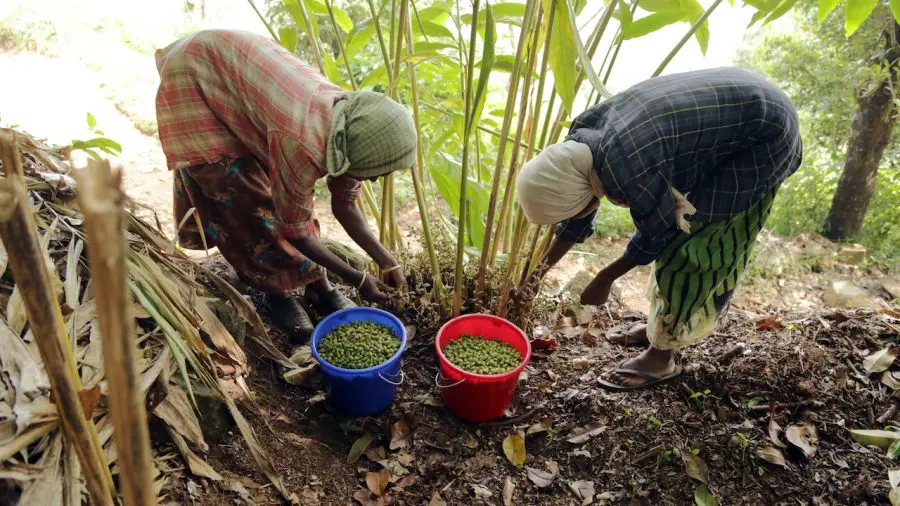
Ready to take a walk through a forest that’s also a farm? Yeah, it sounds a bit like a fairy tale, but that’s the magic of agroforestry!
At its heart, agroforestry is where the cozy comfort of traditional farming meets the wild wonder of forests.
But it’s more than just planting trees beside crops.
As we peel back the layers, you’ll discover the science, the strategies, and the stories that make agroforestry a standout character in the epic of sustainable agriculture.
Let’s jump right in and get to know this eco-friendly superstar a bit better!
Historical context and traditional uses
Did you think agroforestry was a new-age trend? Think again!
Picture our ancestors, many moons ago, seamlessly blending forests and farms.
They didn’t have fancy terms for it, but they understood the harmony of trees, crops, and livestock living side by side.
Over centuries, various cultures around the world have realized that when you let trees play a part in your farm, everything thrives just a bit better.
It’s a tale as old as time or at least, as old as farming!
Different models of agroforestry:
Every great story has different characters, and so does agroforestry. Let’s meet the main players:
1. Silvopasture

Imagine cows, sheep, or goats chilling under a canopy of trees. That’s silvopasture for you!
It combines forestry and grazing in a way that’s beneficial for both the animals and the land.
The animals get shade and sometimes even fodder from the trees, while the trees benefit from the natural fertilizers the animals leave behind.
2. Alley cropping
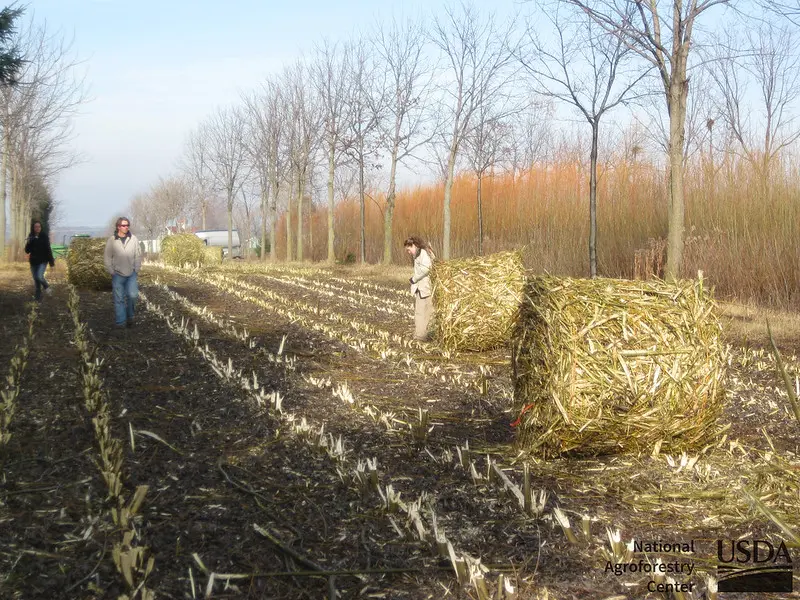
Picture rows of crops running between lines of trees, like lanes in a swimming pool. That’s the gist of alley cropping.
The crops benefit from the shelter and moderated temperatures the trees provide, while the trees get to spread their roots without much competition. It’s like nature’s own version of cooperative living!
3. Forest farming
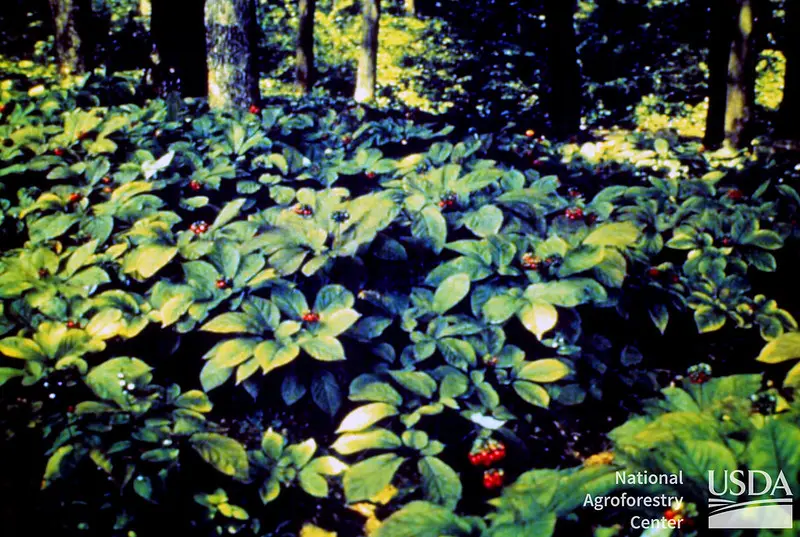
It’s like taking a walk in the woods and finding a salad bar.
Forest farming is about cultivating non-timber products (think mushrooms, herbs, or nuts) under the canopy of a managed forest.
It’s a delicate dance between the wild and the cultivated.
4. Agroforestry and Climate Change
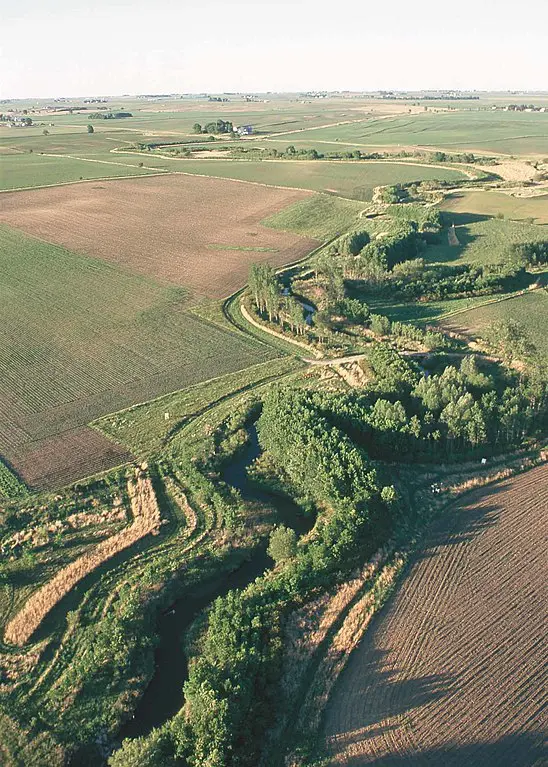
Let’s get to the water’s edge with this one. Riparian buffer strips are areas of vegetation (often trees and shrubs) planted alongside water bodies, like rivers or streams.
Their main gig? Protecting the water from any nasties (like pollutants) running off from the land. They’re the guardians of our waterways!
5. Windbreaks and shelterbelts
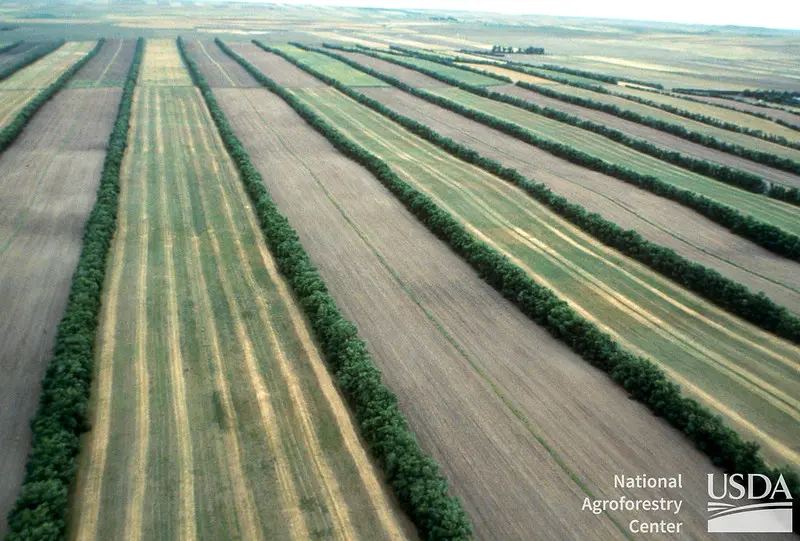
Ever stood behind a wall on a windy day to escape the gusts? That’s pretty much what windbreaks and shelterbelts do for crops.
By planting rows of trees and shrubs, farms get a shield against strong winds, reducing soil erosion and creating a calmer environment for crops to thrive.
As we explore each of these models, you’ll see that agroforestry isn’t a one-size-fits-all kind of deal. It’s versatile, adaptive, and oh-so-innovative!
Agroforestry and Carbon Sequestration
Alright, let’s switch gears a bit and dive into some eco-science magic! You’ve probably heard about carbon footprints and how we all need to tread a bit lighter on our planet.
Well, here’s where agroforestry steps in like that friend who always has a clever solution up their sleeve.
In the world of Agroforestry and Carbon Sequestration, trees are not just silent sentinels; they’re hard-working carbon vacuums.
Let’s unravel how these green giants partner with farms to give our planet a much-needed breath of fresh air!
How trees and shrubs capture and store carbon
Trees and shrubs are kind of like the vacuum cleaners of our planet. But instead of dirt, they’re sucking up carbon dioxide.
It’s all thanks to a neat process called photosynthesis. Remember that from school?
Trees take in carbon dioxide from the air, whip it up with sunlight, and transform it into delicious food for themselves.
But here’s the real kicker: while they use the carbon to grow and thrive, they stash the excess away in their roots, branches, and leaves.
It’s a bit like storing cookies in a secret jar, except in this case, the more they store, the better it is for our planet!
Soil health and carbon storage
Now, let’s dig a little deeper (pun intended!) and talk about soil.
Soil isn’t just lifeless dirt; it’s a buzzing community of microorganisms, nutrients, and organic matter.
When we practice sustainable farming, like agroforestry, the soil gets richer with organic matter, and guess what’s a significant component of that?
Yep, carbon. Healthy soils act like a sponge, absorbing and holding onto carbon for longer periods.
So, by taking care of our soils, we’re essentially turning them into carbon banks. Cha-ching!
Quantifying carbon benefits of agroforestry
But how much of a difference does it really make? you might wonder. Fair question!
Scientists and researchers have been on this case, crunching numbers and examining plots of land with agroforestry practices.
While the exact numbers can vary based on the region, tree species, and specific practices, the consensus is clear: agroforestry systems are carbon-capturing powerhouses.
Think of them like nature’s savings accounts, with compound interest in the form of carbon.
Every tree planted, every sustainable method adopted, it all adds up, helping balance out our planet’s carbon equation.
Pretty cool, right? When you stop to think about it, nature has this incredible way of fixing things, and agroforestry is just one of its nifty tools in the climate toolkit!
Biodiversity and Ecosystem Services
Alright, pop quiz! What do bees, birds, worms, and trees all have in common? No, it’s not the start of a nature-themed joke.
They all play a star role in the world of biodiversity and ecosystem services.
It’s like nature’s grand orchestra, with every little critter and plant having its unique part to play.
In this section, we’re diving deep into how agroforestry takes center stage in boosting this biodiversity and ensuring the Earth’s services keep humming smoothly.
Ready to explore the symphony of nature? Let’s go!
Enhancing habitat for beneficial species
Think of agroforestry as the ultimate bed and breakfast for our planet’s critters.
With a mix of trees, shrubs, and crops, these systems offer diverse habitats for a variety of species.
Birds find branches for nesting, insects discover nooks and crannies to call home, and beneath the soil, worms and microorganisms revel in the rich earth.
It’s more than just providing shelter. It’s about creating an environment where beneficial species can thrive, reproduce, and interact, ensuring a healthier, more balanced ecosystem.
Pest control and pollination benefits
Nature has its own army of pest controllers: from ladybugs munching on aphids to birds keeping insect populations in check.
Agroforestry landscapes are like the ultimate playground for these natural defenders.
With diverse plantings, these systems attract a mix of predators that can help keep pests at bay, reducing the need for chemical interventions.
And let’s not forget our buzzing buddies, the bees! Agroforestry systems offer a buffet of flowering plants, ensuring that pollinators have plenty to feast on.
This is a win-win; they get nectar, and we get better crop yields thanks to their pollinating prowess.
Reducing soil erosion and improving water quality
Soil’s not just dirt; it’s the lifeblood of any farm.
When trees and shrubs are added to the farming mix, their roots act like nature’s anchors, holding the soil in place even when heavy rains try to wash it away.
This not only prevents the precious topsoil from eroding but also ensures that nutrients don’t get leached away.
And there’s more! Those same trees and shrubs play a vital role in filtering out pollutants, ensuring that any runoff into nearby water bodies is much cleaner.
It’s like having a built-in water treatment plant, courtesy of Mother Nature.
So, next time you see a tree standing tall next to crops, remember it’s doing more than just providing shade.
It’s playing its part in nature’s grand orchestra, ensuring the melody of life plays on!
Adaptation Benefits
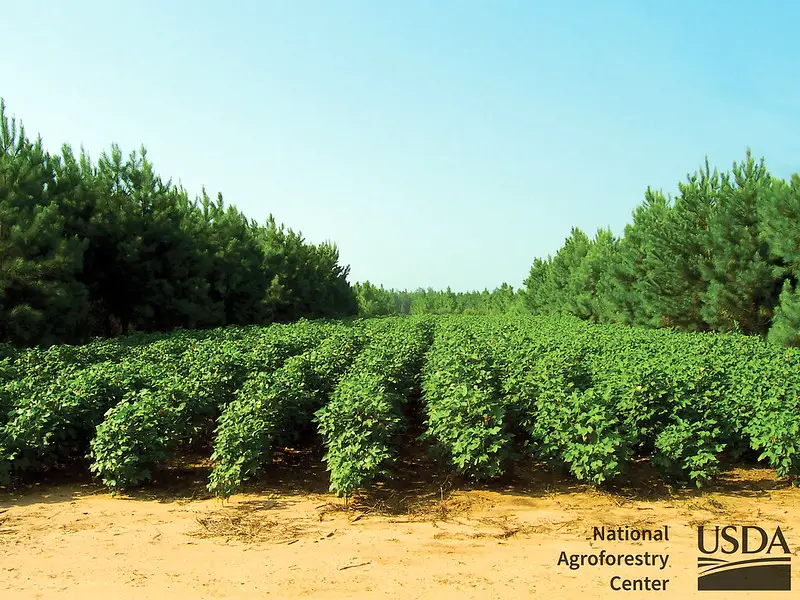
Let’s imagine for a moment that our planet is like a big, old house.
Over time, as the weather changes and seasons shift, we might need to tweak a few things here and there, maybe add some insulation or fix a leaky roof.
Similarly, in the vast house of our global ecosystem, agroforestry serves as a handy toolbox for adaptation.
In this section, we’ll explore how blending trees with agriculture not only helps farms roll with the punches of changing climates but also gives them a leg up.
Curious about how nature equips us to adapt and thrive? Let’s dive in and find out!
How agroforestry can help farms adapt to changing climate conditions
Imagine giving a farm a cozy blanket during cold spells or an umbrella during scorching sun.
That’s kind of what agroforestry does. By integrating trees into farming systems, we create a buffer.
Trees provide shade, reducing the impact of extreme heat on crops. Their deep roots tap into underground water reserves during dry spells, sharing the moisture with their plant neighbors.
It’s like having an on-site support system that anticipates the weather’s whims and helps the farm adjust accordingly.
Moderation of microclimates
Let’s talk about those cozy little pockets of climate on a smaller scale, microclimates.
By adding trees and shrubs to the mix, farms can create their own comfy nooks of moderated temperature and humidity.
Think of it as nature’s own climate control. Trees block out harsh winds, their canopy diffuses direct sunlight, and the combined plant life increases moisture content in the air.
So, beneath this protective umbrella, crops get a more consistent and favorable environment to flourish.
It’s like finding that perfect spot on the couch where the sunlight isn’t too glaring and the breeze is just right!
Increased resilience against extreme weather events
You know those action movies where the hero braces against all odds, faces storms, and comes out unscathed?
Agroforestry aims to give farms a bit of that mojo. When violent storms or heavy rains roll in, the diversified structure of an agroforestry system stands firm.
Trees and their robust root systems act like natural barriers, breaking the intensity of wind and reducing the force of rushing water.
This means less soil erosion and fewer chances of crops getting wiped out.
Plus, the blend of deep-rooted trees with surface-rooted crops ensures that the land stays well anchored, reducing the risks of landslides or flooding.
It’s all about teaming up and standing strong together.
So, the next time you hear about changing climate patterns or extreme weather forecasts, remember that with agroforestry in our corner, we’ve got a pretty solid game plan to adapt and thrive!
Economic and Social Benefits

When we merge the world of trees with the realm of crops, it’s not just the environment that gives us a thumbs up.
Our bank accounts and communities have reasons to cheer as well. Let’s dive into the specifics of this happy marriage:
Diversifying farm income with multiple products
Imagine running a store that only sells one product. Sure, it might be a hit for a while, but what if the demand drops?
Now, picture a store stocked with a variety of items, catering to a broader audience.
That’s the magic of agroforestry for farmers. Instead of banking on just one crop, they get to harvest and sell an array of products: fruits, nuts, timber, medicinal plants, and more.
It’s like opening multiple streams of revenue, ensuring that even if one doesn’t strike gold, the others might!
Reducing risk and reliance on a single crop
There’s an old saying, Don’t put all your eggs in one basket, and it rings especially true for farming.
By diversifying the farm with a mix of trees and crops, farmers don’t have to lose sleep over a bad season or a pest attack decimating their only source of income.
Trees can act as a safety net. If a particular crop faces a rough year, the income from timber or fruit might help bridge the gap.
It’s all about spreading the bets and ensuring a fallback plan.
Increasing community engagement and awareness
Here’s the cherry on top: Agroforestry isn’t just a boon for individual farmers. It’s a gift to the community.
When farms diversify, they often need more hands on deck, leading to job creation.
Plus, these systems become a hub for learning. Schools, local groups, or curious individuals might take farm tours, getting a firsthand look at sustainable farming in action.
It fosters a sense of community pride, awareness, and education, reminding everyone of the bond we share with nature and the importance of nurturing it.
So, in a nutshell, marrying agriculture with forestry isn’t just about planting trees amidst crops.
It’s about planting seeds of economic prosperity, community growth, and shared knowledge. And honestly, who wouldn’t want to RSVP to that kind of party?
Challenges to Implementing Agroforestry

We all know that every silver lining has its own cloud, and while agroforestry is a bit of a superstar in the sustainable farming world, it’s got its set of hurdles too.
But don’t worry, understanding these challenges is half the battle. Let’s navigate through them together:
Perceived economic barriers
Imagine being a farmer and someone suggests, Hey, why not plant some trees amid your crops? It’ll be great!
Your first thought might be, But money? Transitioning to agroforestry can initially seem like an economic mountain to climb.
There’s the cost of buying saplings, maybe losing some immediate income by dedicating space to trees that won’t bear fruit or timber for years, and the uncertainty of whether these long-term benefits will pan out.
It’s a bit like investing in a start-up. There’s potential for big returns, but it’s not without risks.
Land tenure and policy constraints
Alright, let’s talk bureaucracy. You might be brimming with enthusiasm to kick-start an agroforestry project, but sometimes, the rules of the land (quite literally) can be a buzzkill.
In many regions, land ownership issues, unclear land rights, or policies that don’t favor multi-cropping can throw a wrench in the works.
Think of it as wanting to paint your rented apartment in vivid colors, but the lease agreement strictly says whites and beiges only.
When farmers aren’t sure if they’ll have long-term access to their land or face policy roadblocks, taking the leap into agroforestry can be daunting.
Need for training and knowledge transfer
Jumping into agroforestry without the right knowledge is like trying to cook a gourmet meal with no recipe.
You’ve got all the ingredients, but where to start?
Training is crucial. Farmers need to know which trees to plant, how to care for them, how they’ll interact with existing crops, and so much more.
Plus, every region, soil type, and climate brings its own set of specifics.
Without proper training programs, workshops, or accessible resources, making the switch to agroforestry can feel like a shot in the dark.
But here’s the thing: recognizing challenges is the first step toward finding solutions.
As the saying goes, Where there’s a will, there’s a way. And with the many benefits of agroforestry, there’s definitely a whole lot of will to find that way!
Case Studies: Success Stories from Around the World
Picture this: You’ve just settled down with a cup of coffee (or tea, if that’s your jam), and you’re about to dive into a book of captivating tales.
Only, this isn’t fiction it’s real, inspiring stories from farmers and communities worldwide who’ve taken the agroforestry plunge and come up swimmingly.
From the balmy tropics to the cool climes of temperate zones, let’s globetrot together and discover how these folks are making magic with their land, shall we?
Examples from tropical regions (e.g., coffee farms in Central America)
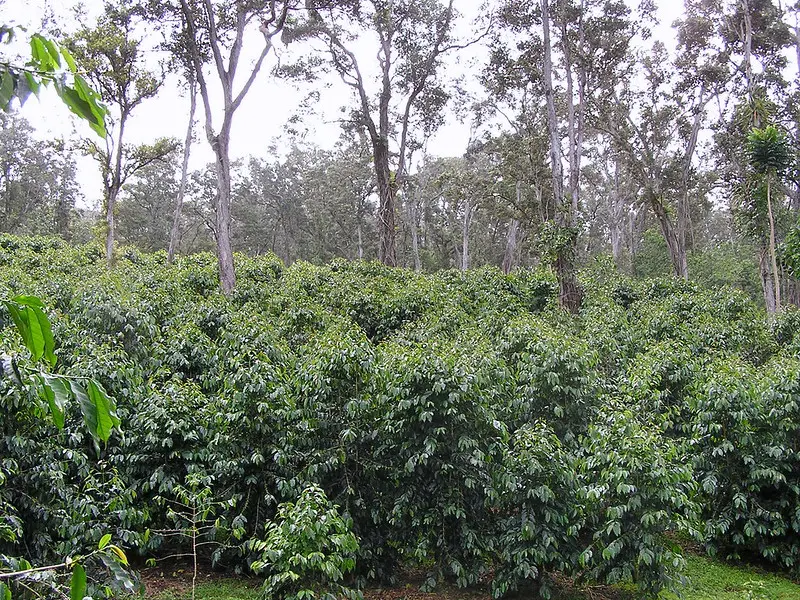
Ah, the lush tropics! Here, amidst the chirping cicadas and vibrant flora, many coffee farmers in Central America have brewed a perfect blend of agroforestry.
By integrating shade trees within their coffee plantations, they’ve not only provided a cooler environment for their beans (which, by the way, love that) but also ensured healthier soil and a haven for biodiversity.
These systems often result in beans that are of higher quality, which means a better cuppa for us and a heftier paycheck for them. Win-win!
Temperate region examples (e.g., silvopasture in Europe)
Now, let’s pack our bags and jet-set to Europe, where the rhythm of hooves mingles with the whisper of leaves.
Many European farmers have embraced silvopasture, a system where trees, livestock, and forages share the land harmoniously.
It’s like a delightful countryside mosaic: Trees provide shade and fruits, livestock graze on the undergrowth, and in return, their droppings enrich the soil.
The result? Happier animals, increased farm productivity, and, of course, scenic landscapes that look straight out of a postcard.
Insights from smallholder farms and larger commercial operations
Scale it up or pare it down, agroforestry’s flexibility is one of its shining stars.
On one hand, you have smallholder farms, where families maximize every square inch, creating dense tapestries of food crops, medicinal plants, and timber.
These compact models are powerhouses of resilience and resourcefulness.
On the other, larger commercial operations demonstrate that agroforestry isn’t just a ‘small farm thing’.
With the right planning, even expansive lands can integrate trees and crops to boost yields, enrich the environment, and yes, increase those profit margins.
So, as we hop from one story to another, it becomes clear: The magic of agroforestry isn’t confined to a single plot of land or a specific region. It’s a global tale of innovation, grit, and green thumbs!
Future Directions and Potential
Alright, get ready to hop into our metaphorical time machine because we’re setting our sights on the horizon, where the promise of tomorrow meets the learnings of today.
Agroforestry isn’t just a nod to age-old practices. It’s also a doorway to the future of sustainable farming.
From groundbreaking research to tech innovations and policies that back it all up, let’s peek into what the next chapters of the agroforestry story might look like.
Fasten your seatbelts; the future’s looking pretty green!
Research and innovations in agroforestry techniques
Research labs and fields worldwide are buzzing with activity and for a good reason.
Scientists and agronomists are diving deep into the soil, exploring new tree-crop combinations, studying symbiotic relationships, and even figuring out ways to make trees grow faster and healthier.
The goal? To optimize every bit of land, every drop of water, and every ray of sunlight.
With every study, we’re getting closer to understanding how to make agroforestry even more efficient and beneficial for our planet.
Policy recommendations and incentives
Behind every thriving agroforestry system, there’s often a supportive policy or incentive nudging it forward.
Think of it as the backstage crew in a theater production, making sure everything runs smoothly.
Governments and organizations are recognizing the immense value of agroforestry, drafting policies that promote it, and offering incentives be it financial, technical, or informational to farmers ready to embrace this practice.
These initiatives aren’t just about making agroforestry more feasible. They’re about creating a world where trees and crops coexist as the norm, not the exception.
Role of technology in enhancing agroforestry practices
Enter the digital age of agroforestry!
From drones mapping out the perfect spots for tree planting to apps that help farmers monitor soil health, technology is playing a pivotal role in refining and enhancing agroforestry practices.
Imagine getting real-time data on your phone about the moisture levels of your soil, or using satellite imagery to plan your tree-crop combos.
It’s like having a personal assistant but for your farm. As tech continues to evolve, it’ll undoubtedly open up exciting avenues to make agroforestry smarter, more precise, and even more sustainable.
So, as we stand on the cusp of all these possibilities, it’s exhilarating to think about the leaps and bounds agroforestry could make.
The future? It’s as bright as a sunlit forest clearing!
Agroforestry and Climate Change FAQ
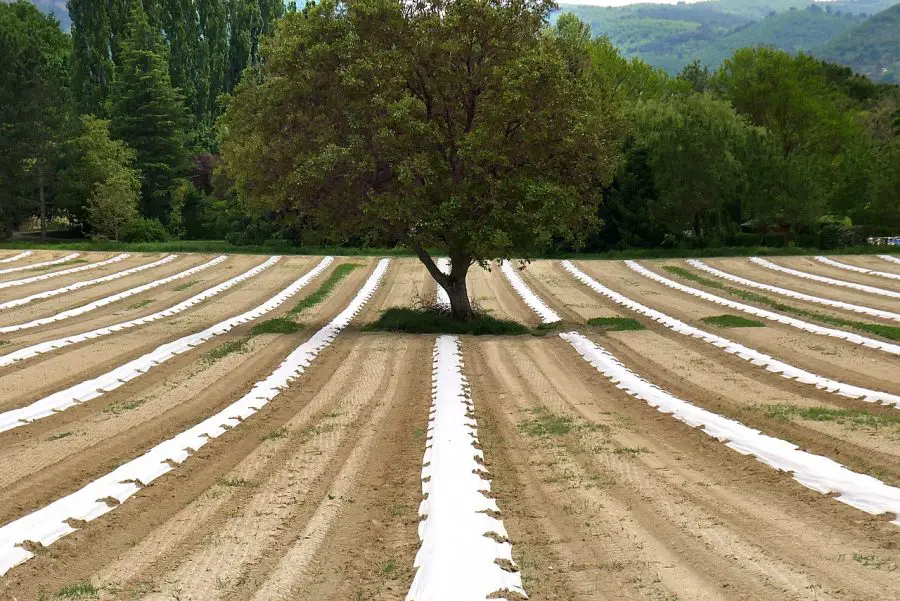
Pull up a chair and get comfy, because it’s question time! I bet as we journeyed through the vast world of agroforestry, a few burning questions popped up in your mind.
Maybe they danced around, itching for answers, or maybe they’re just starting to form as you reflect on everything we’ve covered.
Either way, we’ll dive into the most frequently asked questions about agroforestry. Ready to satisfy that curiosity? Let’s dive in!
Q: Does agroforestry help with climate change?
A: Absolutely! Agroforestry, by blending agriculture and forestry, acts as a double agent.
It not only reduces greenhouse gas emissions (thanks to the trees capturing and storing carbon) but also enhances the resilience of farming systems against climate-related challenges.
Q: Why agroforestry is a promising climate change solution?
A: Agroforestry is promising because it tackles multiple issues simultaneously.
It captures carbon, enhances soil health, reduces the need for chemical inputs (which have their own carbon footprint), and promotes biodiversity.
Plus, it offers economic benefits to farmers, making it a win-win solution.
Q: How does agriculture and forestry affect climate change?
A: Agriculture and forestry play dual roles. On one hand, unsustainably managed agriculture can emit greenhouse gases, like methane from livestock and nitrous oxide from fertilized fields.
Deforestation, often for agriculture, releases stored carbon.
On the flip side, sustainable agriculture and well-managed forests can act as carbon sinks, pulling and storing carbon from the atmosphere.
Q: What are the largest contributors to climate change?
A: The largest contributors include burning fossil fuels (like coal, oil, and natural gas) for energy, deforestation, industrial processes, and certain agricultural practices.
Additionally, transportation, waste management, and residential activities play roles. Each emits various greenhouse gases, with carbon dioxide being the most prominent.
Q: How can plants and trees help stop climate change?
A: Plants and trees act like Earth’s lungs and vacuum cleaners combined!
They absorb carbon dioxide during photosynthesis, convert it into oxygen and organic matter, and store it.
This not only reduces the amount of CO2 in the atmosphere but also enriches the soil.
Moreover, forests influence local and global climate patterns and play a key role in water cycles, making them critical players in the climate solution playbook.
Agroforestry and Climate Change Conclusion

And just like that, we’ve meandered through the lush landscapes of agroforestry together, soaking in its incredible potential.
From intertwining roots below the earth to the canopy of leaves brushing the sky, agroforestry stands tall (pun intended!) as a beacon of hope in our fight against climate change.
But as we wrap up this green journey, it’s essential to remember that it doesn’t end here.
Our choices, big or small, will shape the future of farming and the planet. Let’s wrap our heads around the finale, shall we?
Integral role of agroforestry in addressing climate change
Agroforestry isn’t just about planting trees among crops; it’s about reshaping the narrative of modern agriculture.
By integrating trees into agricultural landscapes, we’re doing more than just sprucing up the scenery we’re creating ecosystems that breathe life into the soil and air.
These systems can gobble up carbon, bolster biodiversity, and even act as a safety net for farmers facing unpredictable weather patterns.
In essence, agroforestry is a heavyweight champion in the climate ring, packing a punch against the adverse effects of climate change.
Call to action for farmers, policymakers, and consumers to support agroforestry
Alright, here’s where you come in. If you’re a farmer, consider the bountiful benefits of blending forestry into your plots.
Policymakers? How about shaping a world where trees and crops coexist harmoniously, by offering incentives and crafting supportive policies?
And for all you savvy consumers out there, let your wallet do the talking.
Opt for products from agroforestry systems and encourage sustainable farming.
After all, every tree planted, policy shaped, and product purchased can lead us closer to a greener, cooler planet. Let’s make it count!
Additional Resources
Before we part ways, I couldn’t leave you without pointing out some handy resources.
Think of this section as your compass guiding you deeper into the world of agroforestry.
Whether you’re itching for a good book to curl up with, seeking an organization to support, or even considering diving into formal training, this curated list is your ticket.
Grab a pen (or just bookmark this page); you won’t want to miss these!
Recommended books, articles, and documentaries
Books:
The Carbon Farming Solution by Eric Toensmeier. Dive into this book to understand how we can combat climate change with regenerative agriculture practices, including agroforestry.
Agroforestry in Sustainable Agricultural Systems by Louise E. Buck and James P. Lassoie. A deep dive into agroforestry systems and their role in sustainable farming.
Organizations promoting agroforestry
World Agroforestry (ICRAF): This international organization is at the forefront of scientific research and advocacy for agroforestry.
Agroforestry Research Trust: A UK-based non-profit dedicated to research, education, and promoting agroforestry.



